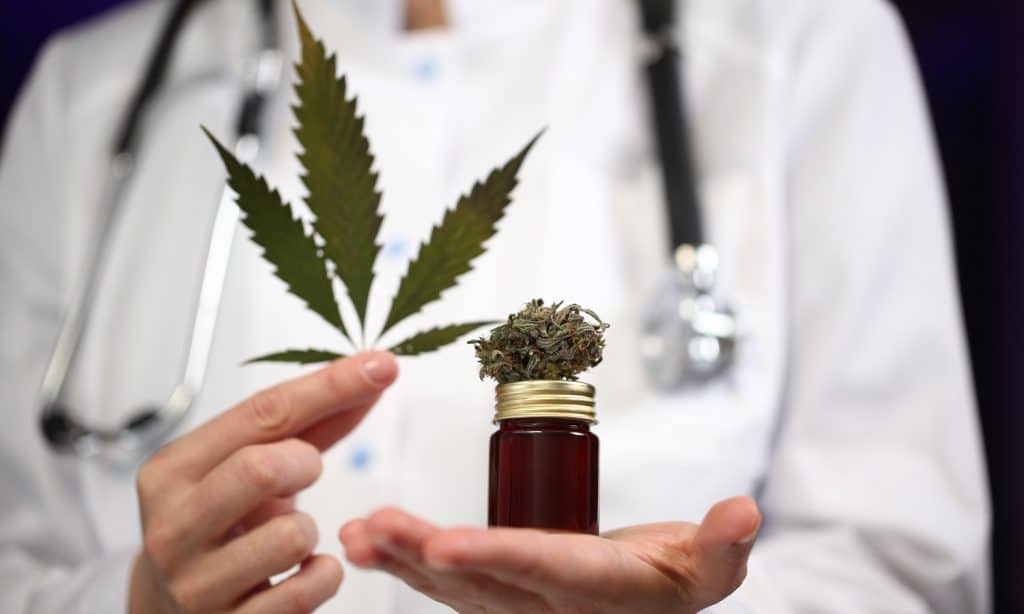What glut? Cannabis prices rise as oversupply worries ease in Oregon
Oregon legislators established a moratorium on new recreational marijuana producer licenses earlier this year to manage an oversupply of product in the state.
But not everyone agrees there’s an oversupply.
SB 218 authorized a producer moratorium through Jan. 2, 2022, based on a January 2019 OLCC study that said in part, “As of Jan. 1, 2019, the recreational market has 6.5 years’ worth of theoretical supply in licensees’ inventory accounted for and contained within Oregon’s Cannabis Tracking System.”
Some wholesale and retail outlets at an OLCC listening session in July in Ashland said they were having trouble sourcing quality product. They were also concerned that the moratorium was a short-term fix that would cause market swings with unintended consequences.
“They [the Oregon Legislature] wanted a moratorium because we had a glut of marijuana in this state and a lot of the industry itself was asking for controls on reduction,” stated OLCC Executive Director Steve Marks at the listening session.
“Our study said there’s 6.5 theoretical years of supply inside the system, and there wasn’t,” Marks admitted. “That’s all products, and that didn’t include waste. So people’s understanding was conflated.”
“Across the board in the last 3 to 6 months, everyone is reporting a shortage in a significant portion of the supply chain,” said Brad Bogus, vice president of marketing at Confident Cannabis, a company that analyzes Oregon’s metrics through its sales and inventory management software. “Either they’re not able to find flower at the conditions they’re looking for or they can’t find the lower-price flower they could find six months ago, and the prices are starting to rapidly rise.”
Higher prices for recreational marijuana means better margins for producers and everyone else in the seed-to-sale continuum. Consumers are feeling the pinch as retail prices go up for mid-market, premium and ultra-premium product.
“Three months ago I could find marijuana as low as $250 a pound, and I’m seeing that same pot today at $600,” said Jeff Dillard, who runs West Coast Organic in Brookings. “But if you want a quality product, you have to pay for it.”
The recreational marijuana market is driven by flower, big perfect buds for retail and the thousands and thousands of pounds that processors require weekly.
BDS Analytics, which monitors aggregated industry data, reported that for 2019 2nd quarter, Oregon had $197.34 million in recreational marijuana sales with 29.99 million gram units sold, 46% in flower, 30% in concentrates, 12% in edibles and 11% in other products.
Some say that in late 2018 and early 2019, processors bought up available marijuana inventory at low prices and processed bud for concentrates and edibles, because these products store well and can wait in inventory for price increases.
One problem, says Spencer Mullen, who runs Pharmer’s Market in White City as a wholesaler and Rogue Valley retail stores called Pharm to Table, is that cannabis molds easily, so warehoused bud or “fresh” product may be lower quality, and while it can be stored, it is expensive to do so.
Stable temperatures, lower storage temperatures, nitrogen injection and low humidity can help preserve freshness and smokability in warehoused marijuana for up to about two years, according to Dillard, though others suggest 8 months is the maximum storage time before weed turns dark and loses potency.
Regulating a new controlled substance is complicated at best, and predicting market demand is never easy. The cannabis industry and OLCC expected some early disruption and market adjustment. With Oregon’s easy entry to the market in early years, more recreational marijuana was grown in 2017 than could be absorbed by Oregon’s processing and warehouse infrastructure, and prices for flower dropped in 2018.
“Small mom and pops to really large scale, really well funded companies collapsed because they underestimated the amount of money it would take to survive through the crash,” explained Mullen.
“You saw people who were barely staying alive in 2018; even indoors cut way back on their production. Now that the market is stabilizing, we’ll see what happens,” Mullen added.
Confident Cannabis metrics suggest that the current shortage is more than a mid-summer seasonal dip — indoor grows can’t produce the volume needed for the current market, and outdoor harvests won’t come to market until January.
Bogus says that many greenhouses have shut down, savvy rec growers have reduced production and countless growers have diverted agricultural production to hemp.
“By limiting the market it might fix the problem right now, but when the market opens up [with federal deregulation of interstate commerce], I’m concerned that we won’t be able to find any product,” Mullen said. “It’s going to be messy, and a lot of money lost until we have a larger market to give us more stability.”
As of Sept. 19, there were 1,147 active recreational marijuana producer licenses statewide, with another 2,216 new producer license applications in the OLCC backlog — meaning the number of growers statewide would triple if OLCC approved all of the applications in the backlog.
Jackson County had 237 active producer licenses as of Sept. 19, with 438 applications in the OLCC backlog, the most in Oregon in both categories.
Josephine County had 171 active licenses, with 358 stalled by the moratorium, the second-most in both categories.









